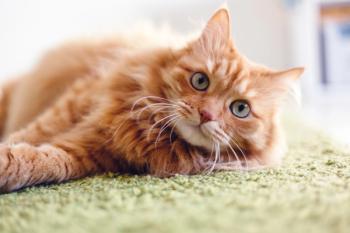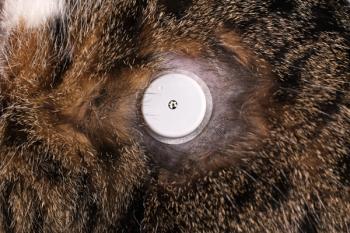
Just Ask the Expert: Tackling a trifecta of long-term diseases
Advice on a geriatric cat with hyperthyroidism, renal disease, and diabetes.
Dr. Bruyette welcome endocrinology questions from veterinarians and veterinary technicians.
Q. I have a co-worker who has an 18-year-old cat that has hyperthyroidism (well-controlled on methimazole) and kidney disease (well-controlled on diet and medication) in which diabetes mellitus was recently diagnosed. What would you recommend in terms of diet and treatment at this time? The owner is very concerned for her geriatric cat and wants to do what is best for him. How should I deal with this trifecta of chronic disease?
A. First, congratulations on successfully managing the first two problems—hyperthyroidism and the renal disease—thereby allowing the cat to live long enough to develop a third.
It is not uncommon for cats with hyperthyroidism to develop diabetes either during treatment with antithyroid drugs or after more definitive therapy with surgery or radioiodine therapy. Insulin resistance occurs in both treated and untreated cats with hyperthyroidism, so it is likely the cause of the diabetes.
David S. Bruyette, DVM, DACVIM
I think you have several options, depending on the owner's tolerance for change and your comfort zone. Ideally, we would like to see if we can decrease the cat's problem list from three (hyperthyroidism, renal disease, and diabetes) to two (hyperthyroidism and renal disease) or even one (renal disease).
OPTION 1
If the cat's renal disease is being successfully managed with a low-protein, low-phosphorus diet, you could start by having the cat eat only a canned formulation of the diet and avoid any dry food. At the same time, start treatment with glargine at a dosage of 0.5 U/kg twice a day. Recheck the cat's blood glucose concentration (preferably at home) one week after starting the insulin by having the owner obtain a blood sample before feeding and insulin administration (this is all at the same time) and again four hours later. You can use that data to adjust the insulin dose as necessary and determine when and if the cat goes into remission.
If the diabetes does not go into remission after three months, consider switching the cat to a canned diet higher in protein and continue to monitor renal function and glycemic control to detect any progression in azotemia as well as remission of the diabetes. In this scenario, continue with the methimazole treatment as before and continue to monitor the thyroid concentrations.
OPTION 2
Switch the cat from its current diet to canned Prescription Diet y/d Feline Thyroid Health (Hill's Pet Nutrition) in an attempt to manage the hyperthyroidism and renal disease with a single diet. We have had good results in reducing or controlling azotemia in hyperthyroid cats with this approach.
Transition the cat from its current diet to Hill's y/d over five to seven days, and stop the methimazole on the day you start the diet change. Two weeks after the cat has been on the y/d exclusively, recheck the serum total thyroxine (T4) concentration and the cat's renal parameters. Depending on those results, recheck the cat again in two to four weeks.
Similar to the scenario above, also start treatment with glargine at a dosage of 0.5 U/kg twice a day, and monitor as outlined in the first option.
If the diabetes does not go into remission after three months, consider switching the cat to a canned diet higher in protein than Hill's y/d, place the cat back on methimazole, and monitor renal and thyroid function as before. The goal would be to see if you can get the cat into remission with respect to the diabetes and get back to having to manage only two diseases.
OPTION 3
If the cat's renal disease has been stable while the cat has been receiving the methimazole and low-protein, low-phosphorus diet, leave the cat on its current diet, stop the methimazole, and treat the cat with radioiodine therapy to eliminate the hyperthyroidism. At the same time, also start treatment with glargine at a dosage of 0.5 U/kg twice a day, and monitor as outlined in the first option.
If the diabetes does not go into remission after three months, consider switching the cat to a canned diet higher in protein and monitor renal function as before. The goal would be to see if you can get the cat into remission with respect to the diabetes and get back to having to manage only one disease—chronic renal disease.
THE BOTTOM LINE
I think any of the scenarios outlined above make sense as long as the owner is willing to monitor as required. There is the real possibility that you can manage all three chronic conditions even if you are not able to reduce the cat's problem list all the way from three to one.
David S. Bruyette, DVM, DACVIM
VCA West Los Angeles Animal Hospital
1818 S. Sepulveda Blvd.
Los Angeles, CA 90025
Veterinary Diagnostic Investigation and Consultation
26205 Fairside Road
Malibu, CA 90256
Newsletter
From exam room tips to practice management insights, get trusted veterinary news delivered straight to your inbox—subscribe to dvm360.






